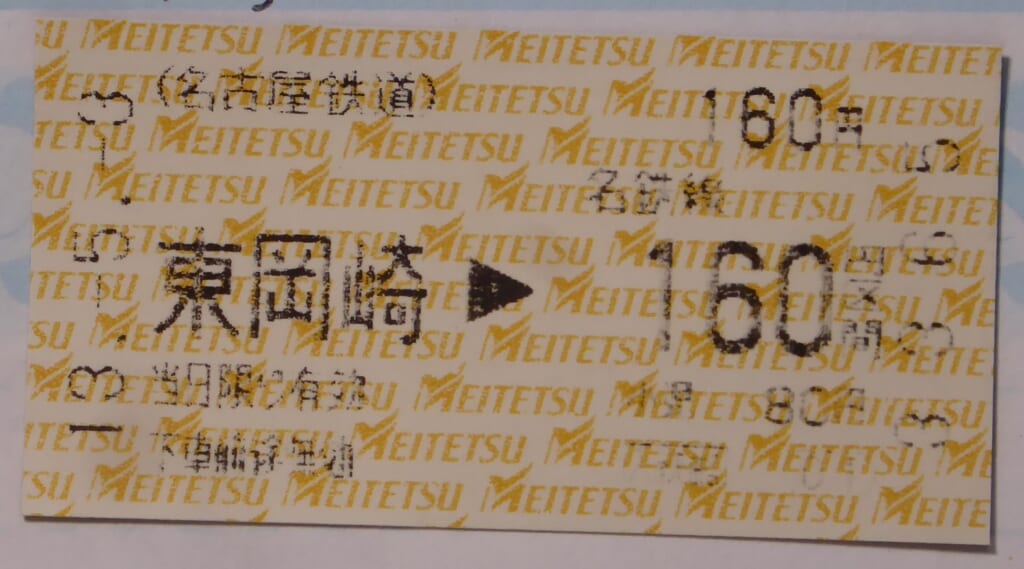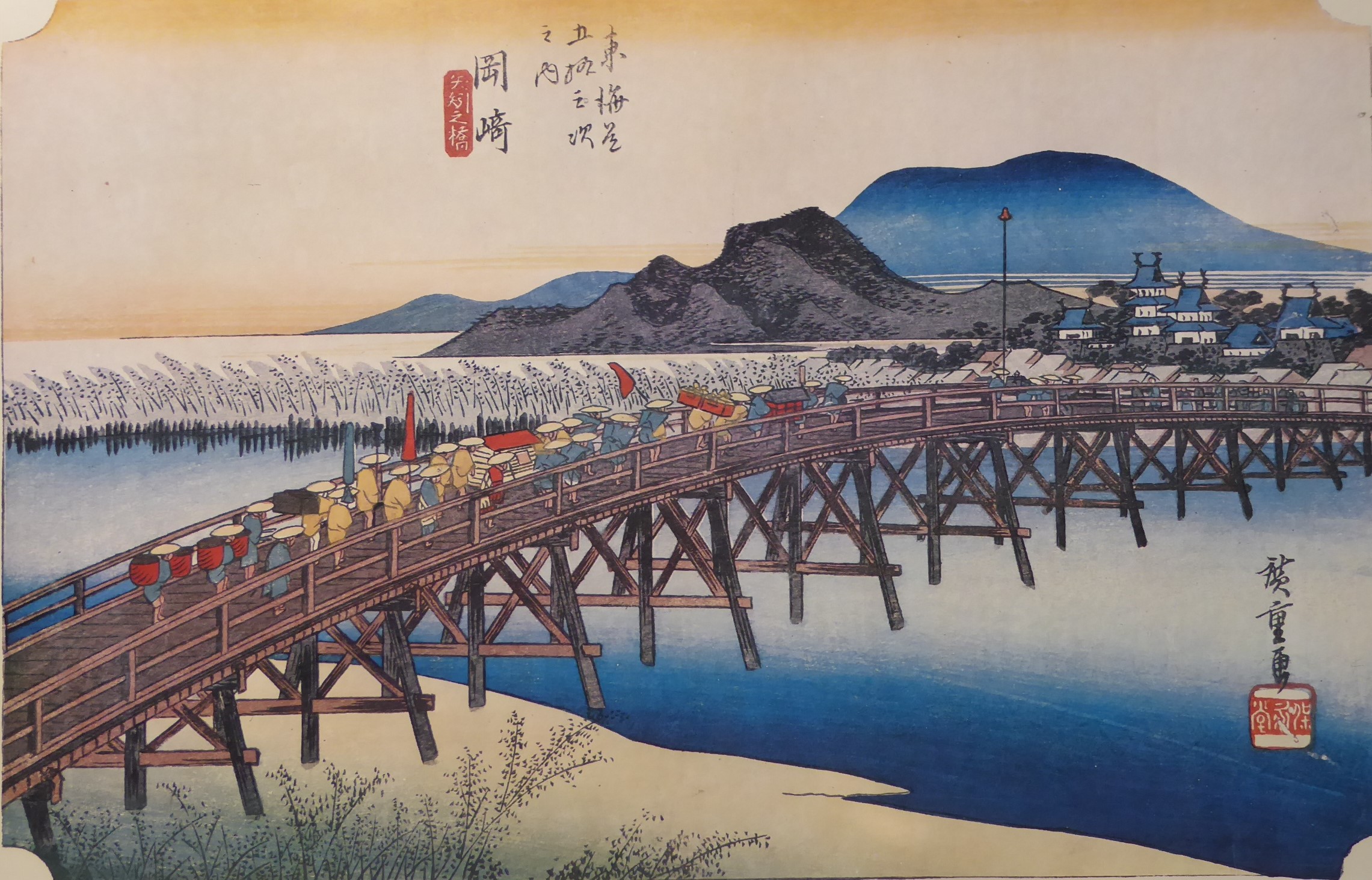Explanation of the Fifty-three Stations of the Tokaido , 39 Okazaki
15.0km from chiryu-juku to Okazaki-juku 34°57’17″N 137°10’23″E
Okazaki-juku is the 38th post town on the Tokaido 53 Stations.
Okazaki-juku was one of the largest post towns on the Tokaido 53 Stations.
Okazaki prospered thanks to the water transport on the Yahagi River and the accumulation of goods from Oku-Mikawa.
The person who contributed greatly to the development of the town was Tanaka Yoshimasa, a vassal of Hideyoshi.
Yoshimasa became the lord of Okazaki Castle after Ieyasu entered Edo.
Yoshimasa brought the Tokaido into the castle town and created the “Twenty-seven Curves,” a winding and twisting road.
The “Twenty-seven Curves” were built not only to defend the castle town, but also to create an economic effect by lining the road with stores and encouraging travelers to stay.
Okazaki only has a stipend of 50,000 Goku, but under the Tokugawa Shogunate, it was the second largest post town after Fuchu-juku, backed by the castle town of Okazaki Castle, the birthplace of Tokugawa Ieyasu.
There are many research and educational facilities and historical sites, and it is a city with a strong cultural and educational character considering its size.
It was the capital of Nukata Prefecture, which existed for a time when the feudal domains were abolished and prefectures were established, and Okazaki Castle served as its office.
It is currently a satellite city of Nagoya City, which belongs to the Chukyo region.
The daytime/nighttime population ratio is 93.9%, with the outflow of population far exceeding the inflow of population.
It is part of the Chukyo Industrial Zone.
Automobile-related factories such as Mitsubishi Motors and Aisin are concentrated here.
Traditional local industries include Hatcho miso, fireworks, and stone products.
Hatcho miso was made by Hayakawa Shinrokuro Katsuhisa, a retainer of Imagawa Yoshimoto, who learned how to make miso at a temple.
After several generations, the family moved to Hatcho Village, which is about 870m (8 cho) west of Okazaki Castle.
They started making miso in 1645. It came to be called “Haccho miso” after the place name.
The unique feature of this miso is that it is made with soybean koji, which is made entirely from soybeans, without using rice or barley koji.
It has a unique astringent and savory taste.
① “Hoeido version”
The Yahagi Bridge spans the Yahagi River, which flows right in front of the building.
The Yahagi Bridge is the longest bridge on the Tokaido road, built by the shogunate.
The Tokaido Meisho Zue states that it is “208 ken (about 370 meters) long… the longest bridge in the Tokaido.”
The daimyo procession is lined up on this bridge to further emphasize its length.
The castle tower of Okazaki Castle can be seen on the opposite bank.
Mount Hongu is floating in the background of Okazaki Castle.
Food could be transported by boat to the castle town using the Yahagi River.
② “Gyousyo version”
painting focuses on Yahagi Bridge.
Okazaki Castle is depicted in the background.
The people passing across the bridge are diverse, including a spear-bearer, a monk practicing monkhood, and a woman on horseback carrying a parasol.
③”Reisho version”
The painting focuses on Yahagi Bridge.
The Hoeido version is a distant view, the Gyousyo version is a close-up view, and Reisho version is drawn with a sense of distance in between.
④ “Hokusai version”
The feudal lord’s procession is depicted from a higher vantage point, even further away than the Hoeido version.
⑤ “Travel image”
An image of the Okazakio city center.
⑥ “Stamp image”
A ticket for Meitetsu Higashi-Okazaki Station.
Hoeido version
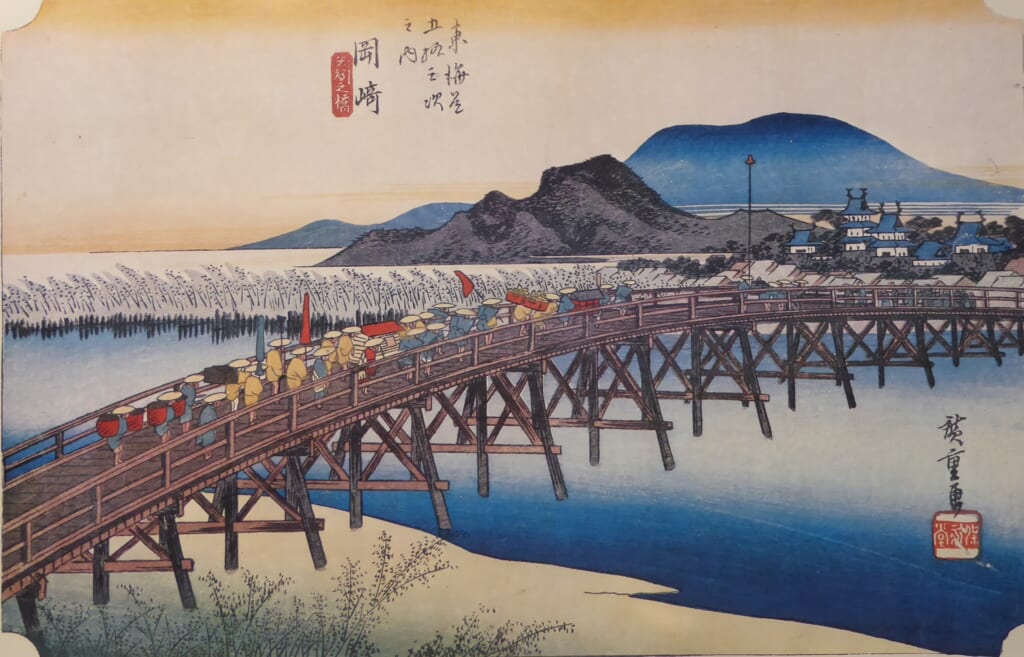
Gyousyo version
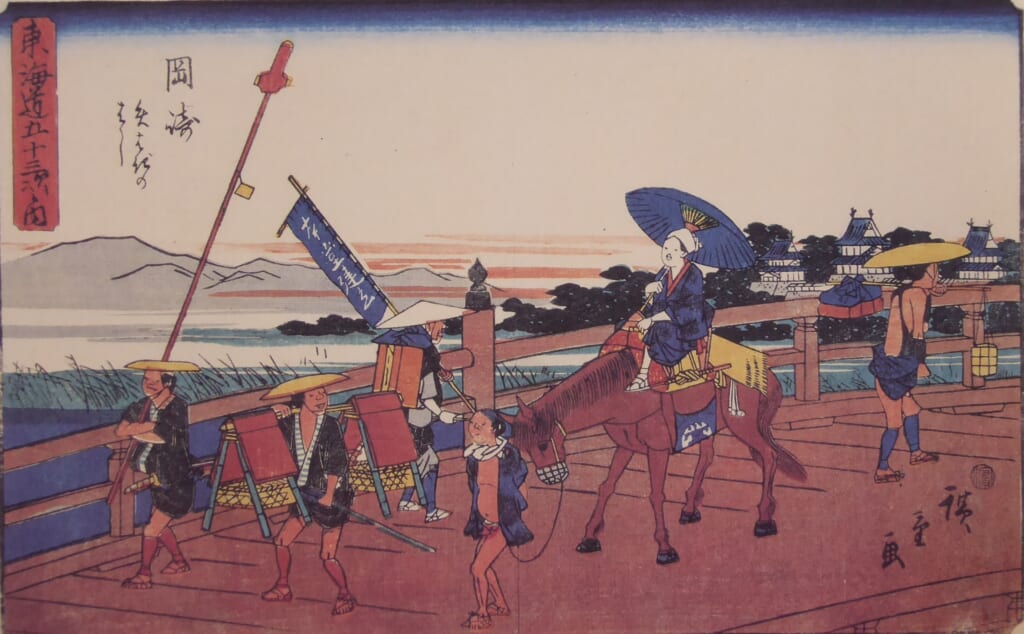
Reisho version
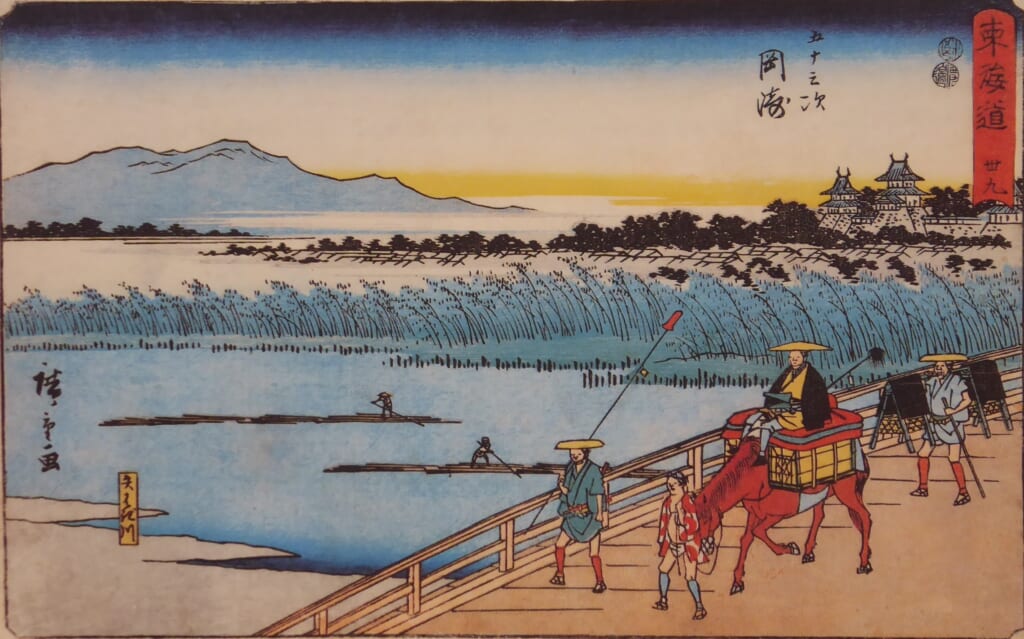
Hokusai version

Travel image
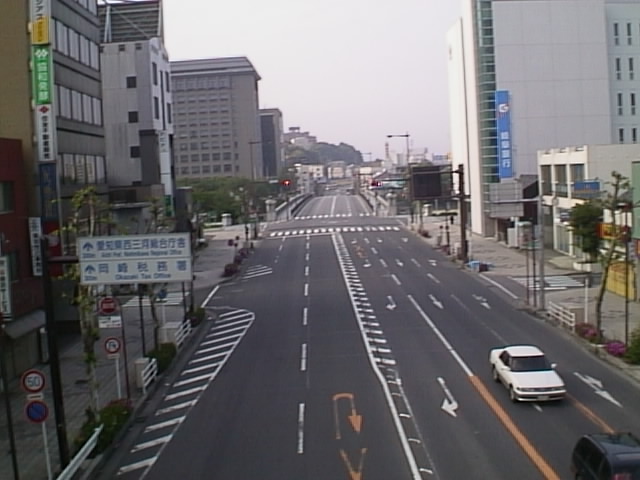
Stamp image
